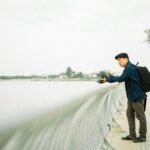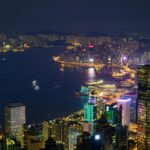Travel is about more than just seeing new places—it’s about feeling the pulse of a city, connecting with its people, and telling its story through your lens. Street photography abroad is the art of capturing these authentic, unscripted moments that reveal the true character of a destination. Whether you’re wandering the alleys of Marrakech, the boulevards of Paris, or the markets of Bangkok, this guide will help you master street photography, so you can capture the soul of any city you visit.
Why Street Photography Abroad Matters
Street photography is a powerful form of visual storytelling. It goes beyond tourist snapshots to document real life—moments of joy, struggle, beauty, and routine. When you practice street photography abroad, you:
- Connect with local culture on a deeper level
- Preserve fleeting moments that might otherwise go unnoticed
- Share stories that inspire empathy and curiosity
- Create a unique visual diary of your travels
Capturing the soul of a city means photographing not only its landmarks, but also its people, textures, and everyday rhythms.
Essential Gear for Street Photography on the Road
1. Camera Choices
- Mirrorless or DSLR: Offers manual controls and interchangeable lenses, but can be bulky.
- Compact camera: Lightweight, discreet, and less intimidating to subjects.
- Smartphone: Always with you, quiet, and perfect for candid shots.
2. Lenses
- Prime lens (35mm or 50mm): Classic choices for street photography, offering a natural perspective and wide apertures for low light.
- Wide-angle lens: Great for capturing context and environmental portraits.
- Zoom lens: Adds flexibility, but can be heavier and more conspicuous.
3. Accessories
- Extra batteries and memory cards: Street photography can be unpredictable; always be prepared.
- Comfortable strap or wristband: For quick access and security.
- Small camera bag: Keeps gear safe and organized without drawing attention.
Mastering Street Photography Techniques
1. Blend In and Observe
The best street photographers are part observer, part participant. Dress simply, move quietly, and avoid standing out. Spend time watching the flow of life before you start shooting.
2. Use Natural Light
Street scenes are constantly changing. Learn to work with available light—whether it’s the soft glow of dawn, harsh midday sun, or the neon of city nights.
- Golden hour: Soft, warm light is ideal for portraits and cityscapes.
- Overcast days: Offer even, diffused light that’s flattering for skin tones and colors.
- Night: Use streetlights, shop windows, and illuminated signs for dramatic effects.
3. Master Composition
- Rule of thirds: Place key elements off-center for dynamic images.
- Leading lines: Use streets, fences, or shadows to guide the viewer’s eye.
- Frames within frames: Shoot through windows, arches, or doorways for depth.
- Juxtaposition: Contrast old and new, rich and poor, or tradition and modernity for powerful storytelling.
4. Capture Candid Moments
Candid photos are the heart of street photography. Look for:
- Genuine expressions
- Gestures and interactions
- Everyday routines
- Spontaneous street scenes
5. Get Close, But Respectful
Don’t be afraid to get close to your subjects—emotion is best captured up close. However, always be respectful. If someone seems uncomfortable, lower your camera and smile.
6. Tell a Story
Think beyond single images. Sequence your photos to show the rhythm of a street, the diversity of a market, or the progression of a festival. Look for beginnings, middles, and ends.
Navigating Cultural Sensitivity and Ethics
1. Know the Local Laws and Customs
Some countries have strict rules about photographing people, government buildings, or religious sites. Always research local laws before you shoot.
2. Ask for Permission When Needed
If you want to take a close-up portrait or photograph someone in a vulnerable situation, ask first. A smile and a gesture can go a long way. Learn a few words in the local language to help break the ice.
3. Respect Privacy and Dignity
Avoid exploiting or misrepresenting your subjects. Don’t photograph people in distress or private moments without consent.
4. Share the Experience
Show your subjects the photos you’ve taken. Offer to send them a copy if possible. This builds trust and can lead to deeper connections.
Best Places for Street Photography Abroad
1. Markets and Bazaars
Markets are full of color, energy, and character. Capture vendors, shoppers, and the vibrant chaos of commerce.
2. Public Squares and Parks
People gather here to relax, play, and socialize. Look for interactions, street performers, and candid moments.
3. Transportation Hubs
Train stations, bus stops, and ferry terminals are crossroads of emotion—farewells, reunions, and the bustle of daily life.
4. Cafés and Street Food Stalls
Photograph the rituals of eating, drinking, and conversation. Capture the hands of a barista, the sizzle of a wok, or the laughter of friends.
5. Festivals and Parades
Events offer a wealth of photo opportunities—colorful costumes, music, dance, and spontaneous celebrations.
6. Backstreets and Alleys
Explore away from the main tourist routes. Here, you’ll find authentic slices of life—children playing, elders chatting, artisans at work.
Editing and Sharing Your Street Photos
1. Edit for Mood and Authenticity
- Adjust exposure and contrast to highlight your subject.
- Enhance colors or convert to black and white for drama.
- Crop to focus on the story, but don’t over-edit—keep it real.
2. Tell the Story
Pair your photos with captions or short stories. Context enriches the viewer’s experience and deepens the impact of your images.
3. Share Respectfully
When posting online, consider the privacy and dignity of your subjects. Avoid sharing images that could embarrass or endanger anyone.
Tips for Overcoming Common Street Photography Challenges
1. Dealing with Shyness or Fear
- Start by photographing scenes from a distance, then gradually get closer.
- Shoot in busy areas where cameras are common.
- Remember: Most people are flattered, not offended, by genuine interest.
2. Handling Crowds and Chaos
- Use a wide-angle lens to capture the energy.
- Focus on details—hands, faces, or objects—that tell a story within the chaos.
- Embrace movement and blur for a sense of action.
3. Working in Low Light
- Increase ISO, open your aperture, and use slower shutter speeds.
- Use available light from street lamps, neon signs, or shop windows.
- Embrace grain and noise as part of the street photography aesthetic.
Building Your Street Photography Skills
- Practice often: The more you shoot, the better your eye becomes.
- Study the masters: Look at the work of renowned street photographers for inspiration and technique.
- Join local photo walks or workshops: Connect with other photographers and learn from their perspectives.
- Reflect on your work: Review your images regularly to see what works and where you can improve.
Final Thoughts: Capturing the Soul of a City
Street photography abroad is about curiosity, empathy, and storytelling. It’s about seeing the extraordinary in the ordinary and sharing the spirit of a place with the world. With the right approach, respect, and a keen eye for detail, you’ll return from your travels with images that not only capture the soul of a city but also enrich your own experience as a traveler and storyteller.
What’s your favorite city for street photography? Share your stories, tips, and favorite shots in the comments to inspire fellow travelers to capture the world’s cities in all their vibrant, authentic glory!


